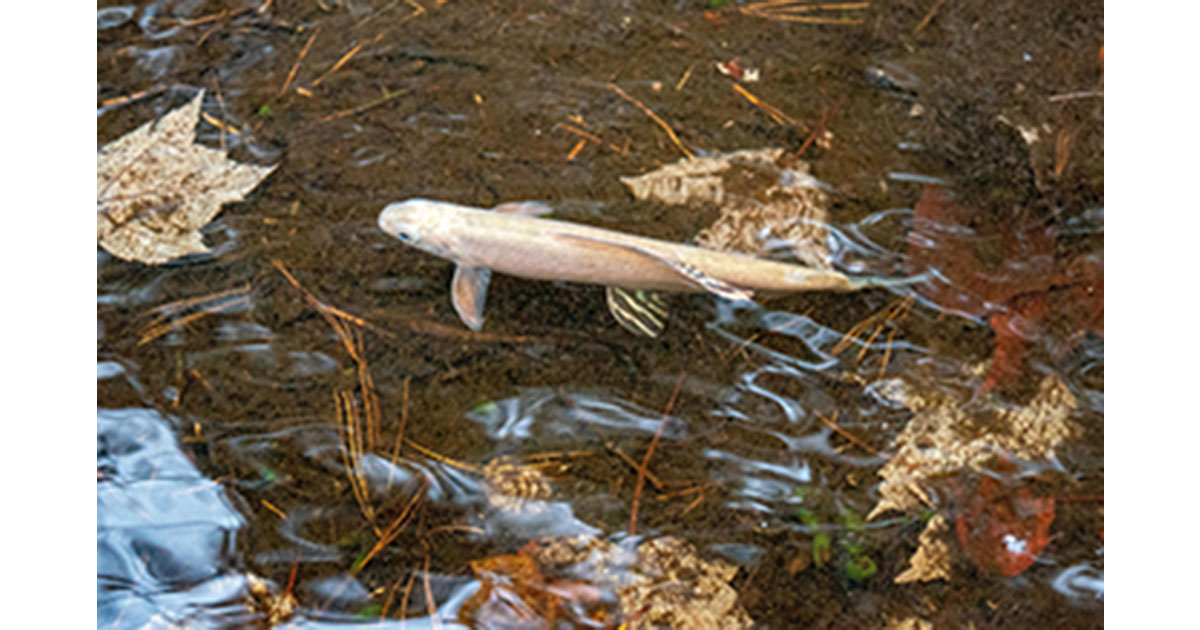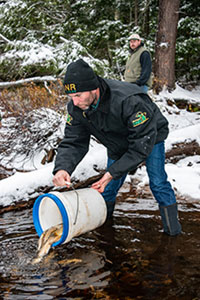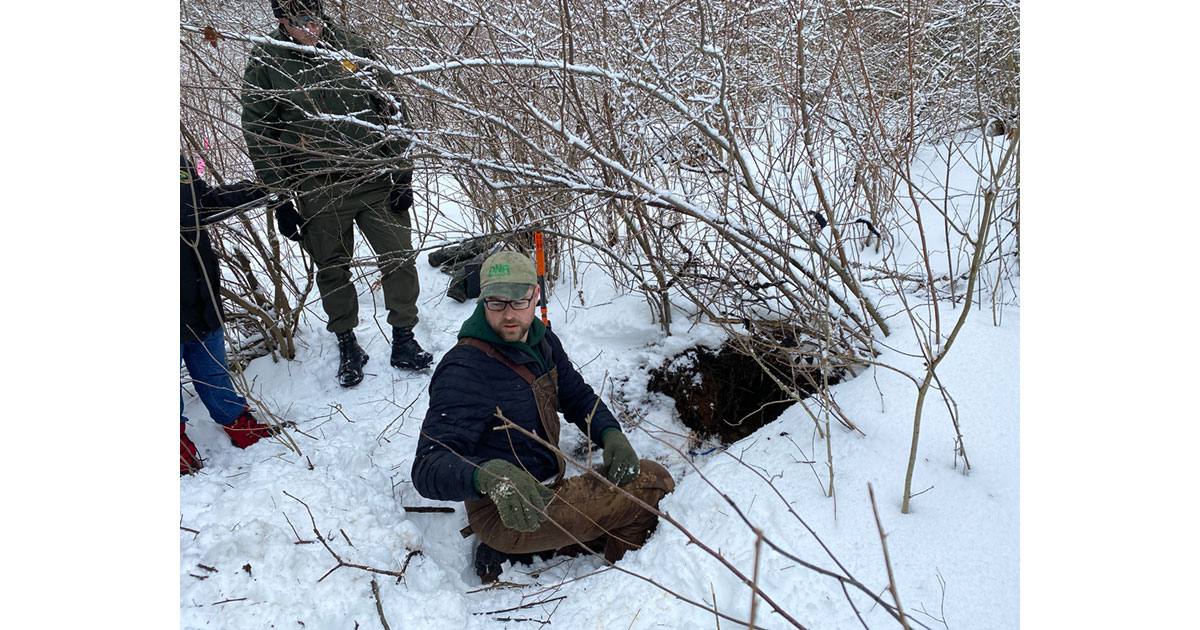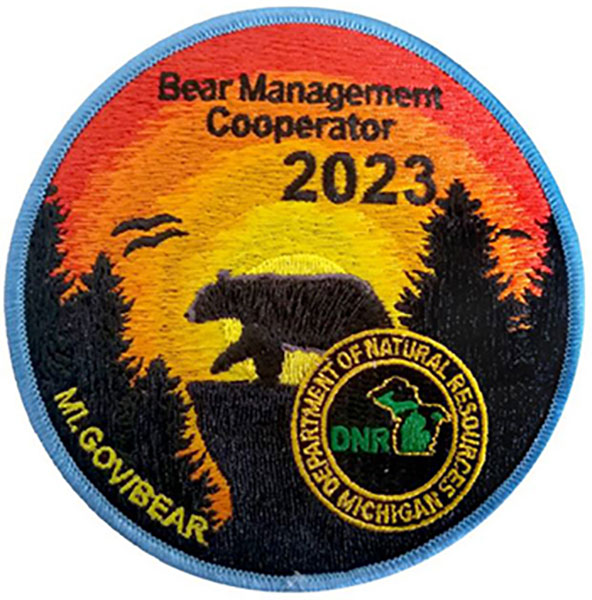- Details
MDNR Report
 Artic Grayling
Artic Grayling
In early November, three Michigan lakes were stocked with Arctic grayling.
These fish are surplus from the establishment of a grayling brood stock as part of the Michigan Arctic Grayling Initiative. The initiative has been underway since Little River Band of Ottawa Indians and the Michigan Department of Natural Resources began a partnership aimed at reintroducing this iconic species to Michigan waters in 2015.
The full partnership now includes nearly 50 stakeholder and partner groups, along with the general and angling public.
Four hundred grayling were stocked at Alger County’s West Johns Lake, 300 at Penegor Lake in Houghton County and nearly 1,300 in Manistee County’s Pine Lake.
The fish were taken from the Marquette State Fish Hatchery in Marquette and represented year classes from 2019 and 2021.
“When starting a year-class of brood stock, you always start with more than you will need in the end to allow for potential losses to disease, mechanical issues, et cetera,” said Ed Eisch, assistant chief of the DNR’s Fisheries Division. “Such losses never materialized with the two year-classes that were stocked. The numbers needed to be thinned down to levels that are safe to carry into the future at the Marquette hatchery.”
 Stocking Arctic GraylingWith the third year-class recently clearing their requisite health inspections, it is highly likely that there will be additional surplus available for stocking again next fall.
Stocking Arctic GraylingWith the third year-class recently clearing their requisite health inspections, it is highly likely that there will be additional surplus available for stocking again next fall.
- Details
By Louie Stout
In this era of some lake associations destroying aquatic habitat, it’s refreshing to see one who is doing just the opposite.
Lake officials at Diamond Lake in Cass County, Michigan are in the planning process of providing MORE fish habitat to the 1,078-acre lake near Cassopolis.
The Diamond Lake Association’s Lake Preservation Committee plans to submerge 10 tree cribs in various sections of the lake, add log barriers along some seawall areas and place boulders around some shorelines to reduce erosion. A lake resident offered to provide the hardwoods for the cribs and the committee will handle the manual labor.
“Fishermen who live on our lake believe fish stocks aren’t what they used to be and this is one way to help the fishermen and the lake,” said Sheryl DeLuca, vice president of the association and the committee chairman. “We know that a good fishery is the sign of a healthy ecosystem.”
- Details
MDNR Report
 MDNR Biologists examine bear den
MDNR Biologists examine bear den
While you’re enjoying time outdoors this fall and winter, keep an eye open for black bear dens. Reporting den locations to the Michigan Department of Natural Resources is a simple, yet effective way to support bear management programs.
“Finding winter den locations is an important component to managing black bear populations, and we need hunter, trapper and landowner assistance to add new den sites to the program in the Upper Peninsula and northern Lower Peninsula,” said Mark Boersen, wildlife biologist at the DNR Roscommon Customer Service Center. “Currently, we are monitoring six bears from the ground and aircraft using radio tracking equipment.”
Depending on their location in the state, bears typically enter dens in November and December. They tend to select dens in locations that provide shelter from the elements, which can include areas with dense vegetation, rock crevices, fallen trees or excavated holes. Bear dens may look like brush piles covered in snow or excavated holes in the ground, both having an icy opening to vent fresh air.
- Details
MDNR Report
A 4-year-old doe that was reported to be in poor condition – skinny, drooling and showing no fear of people – in Klacking Township, Ogemaw County, recently tested positive for chronic wasting disease. It is the first CWD-positive wild deer from that county, a finding confirmed by the University of Wisconsin Veterinary Diagnostic Laboratory in Madison, which works with the Michigan Department of Natural Resources to identify CWD in Michigan’s wild herd.
The county is located southeast of Houghton Lake.
CWD is a fatal neurological disease that affects white-tailed deer, elk and moose. To date, the disease also has been detected in the following Michigan counties: Clinton, Dickinson, Eaton, Gratiot, Hillsdale, Ingham, Ionia, Isabella, Jackson, Kent, Midland and Montcalm.
“When we find chronic wasting disease in a brand-new location, where previous intensive surveillance has not yet been done, it becomes extremely important for wildlife disease managers to understand where additional cases might be within that county,” said DNR deer and elk specialist Chad Stewart. “In light of this new detection, we are offering additional opportunities for those interested in getting their deer tested for CWD in Ogemaw County.”
- Details
MDNR Report
 2023 bear management cooperator patch
2023 bear management cooperator patch
The 2023 bear management cooperator patch is a great way to commemorate the recent bear season. Adult hunters, patch collectors and others can buy a patch for $7. Young hunters, 17 years old and younger, who have a valid bear hunting license can get a free patch.
The Michigan Bear Hunters Association, in partnership with the Michigan Department of Natural Resources, coordinates Michigan’s bear cooperator patch program. Proceeds from patch sales will be used for black bear education and outreach.


